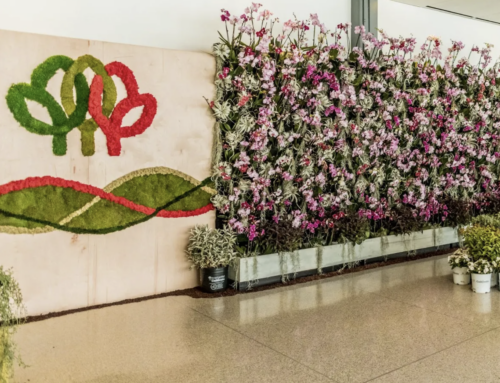Despite the midwinter snow or cold, or cold and snow, there is life in our gardens and landscapes. Let’s look for signs of interest and appeal that make gardening in the north unique.

Flower bud on Rhododendron
The large grape-sized Rhododendron flower bud, formed in the previous season, will eventually develop into a grapefruit-size, purple bloom. Note how the shrub’s leaves at this time hang downward as if wilting. Typically, during the growing season, the Rhododendron foliage is positioned horizontally. I can quickly get an idea of what the winter temperature is by looking out the window at this plant. The colder the temperature, the more vertically the leaves drop and curl. When this image was taken, it was 13 F. Though a variety of theories abound, it appears the leaf’s positioning is the plant’s response at a cellular level to the cold. The rhododendron is a broad-leaf evergreen plant and in a dormant stage with freezing temperatures, it has to minimize exposure to the sun. When the leaves are horizontal and open (not curled), they will absorb the maximum amount of the sun’s rays. This would prompt the mechanisms of the photosynthesis machine to kick-in and crank away. Yet, in the frozen, dormant stage it isn’t prepared for this operation nor can it draw upon the water resources required in the process and the result would be tissue damage and what we’d see as winter burn. The drooping and curling of leaves in the bitter cold minimizes surface area exposure to the sunlight. It is as if the plant is safely hunkering down until warmer weather returns. Truly, the Rhododendron exhibits a unique defense mechanism of survival in winter weather.
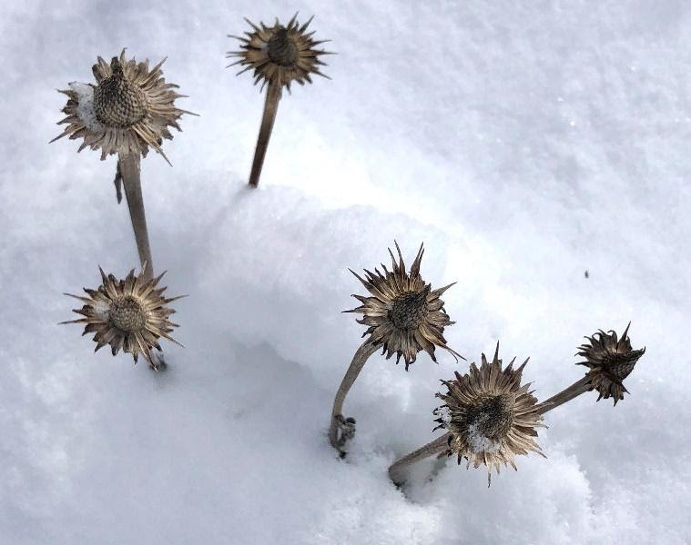
Remains of the seed heads of Purple Coneflowers
You can always count on me leaving up any of the perennials that have the spine to stay erect through the winter. If they have the ability to make a showing above the snow, they deserve to avoid fall cut-down. Most of my perennials are not cut down prior to winter for that matter but other reasons as well. The old foliage, though usually brown and curled, provides insulation to the plant crown and roots during the winter. Many dried arrangement materials and decorations are those plant parts that persist in the winter settings. As with the case of some perennial flowers, the Coneflower (Echinacea) seeds are fed upon by birds helping with their winter survival. In this photo the Chickadees and Goldfinches have thoroughly plucked the seeds from the dried heads.
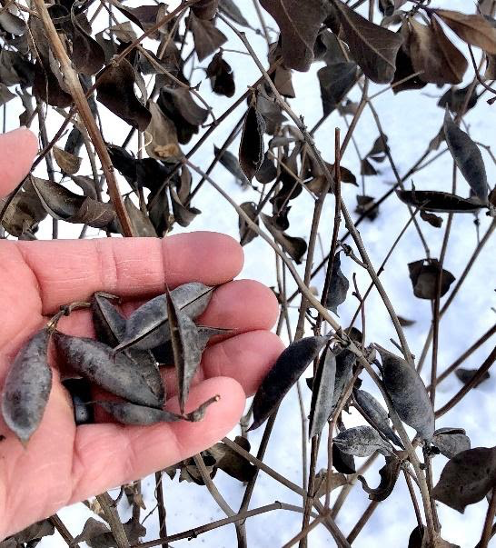
Seed pods from Baptisia
On occasion, I am reminded of one of the more under-rated senses we utilize when in the garden – that is, what we can hear. Typically, we don’t use sound as a criterion when selecting plants, but there are a few and the rattling of the Baptisia pods in the winter wind is a worthy contributor. True, hardly a match for maracas or a rattlesnake, but while waiting for the songbirds to return from the south, the acoustics of rattling and rustling seed pods are appreciated.
When or why would we think of Poison Ivy and the itch it brings in the middle of the winter? Be advised, though the plant is dormant and absent of leaves, the irritating oil can still be transmitted by the bark, berries, branches, and roots. Gardeners and hikers have been fooled (and infected) by the Poison Ivy vines quite visible in the winter landscape. Of the various species of vines found in gardens and woodland settings, it is best to know the characteristics of the one to avoid. Poison ivy vines develop hairy rootlets that attach to whatever is available to climb upward. When a vine is spotted, look closely to see if the vine stem seems to be attached on the sides by root hairs as seen in this image on this walnut tree trunk. Remember the rhyme, “It there’s hair on the vine – it’s no friend of mine.”
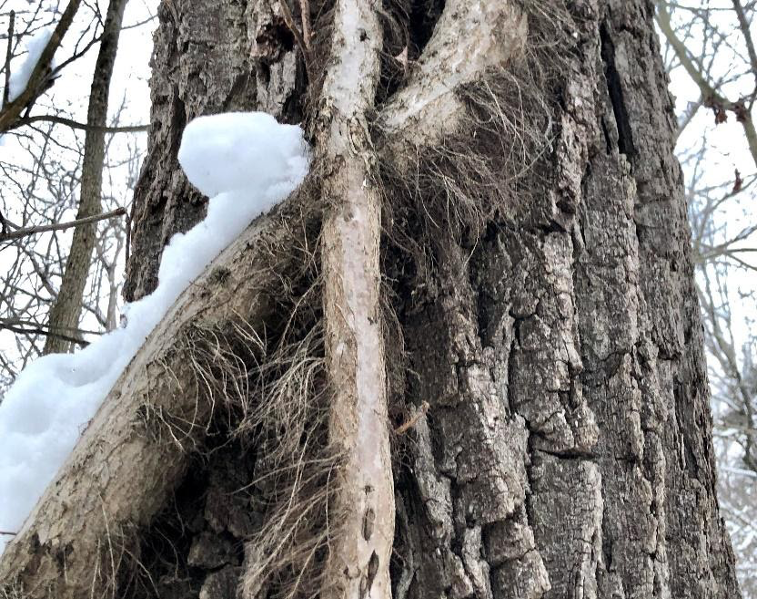
Poison Ivy vines in midwinter snow
Speaking of vines, another problem plant that becomes more noticeable in the winter landscape is the Asian Bittersweet Vine. Often hidden by foliage during the growing season, when leaves are off watch for its characteristic spiral wrap moving upwards on about anything somewhat vertical. The vines grow fast and are destructive as they constrict and girdle trees and shrubs. Evident in this image is an indentation into the tree bark when the vine is restricting growth. The pressure can eventually reduce or shut down the flow of nourishment in the tree causing the serious decline. Unlike the Poison Ivy, the vine is smooth bark and minus hairy rootlets. Once clear that it is not Poison Ivy, proceed in removing the nasty invader.
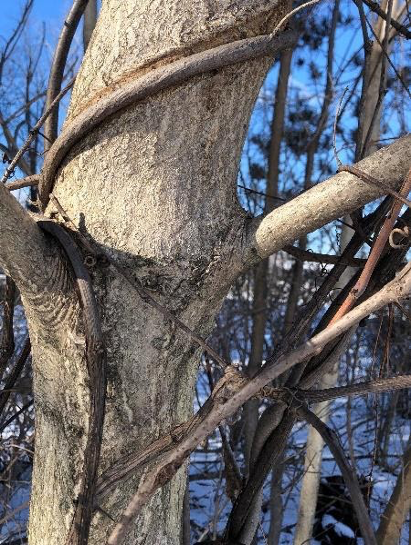
While the winter continues to move along snowly, we have more posts coming appropriate for the season.
Keep warm,
Rob
Please feel free to contact me with any questions or for more info at: [email protected]


